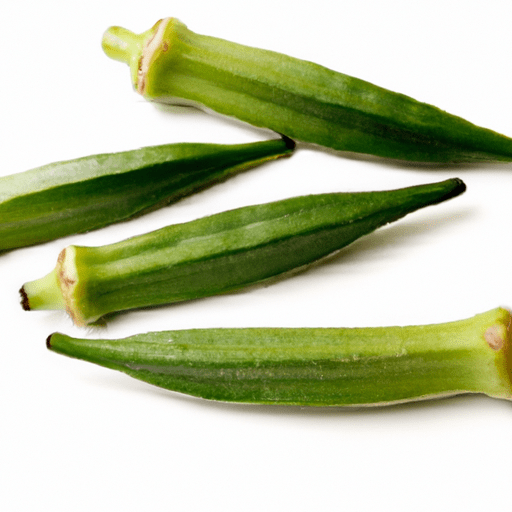Exploring the Delicate Delights of Savoiardi: A Culinary Journey
If there’s one sweet treat that effortlessly blends elegance, versatility, and irresistible flavor, it’s savoiardi. Also known as ladyfingers, these delicate, sponge-like biscuits have long been revered in the culinary world. From classic desserts like tiramisu to vibrant trifles and expertly layered cakes, savoiardi adds a touch of sophistication and decadence to any dessert creation. In this blog post, we’ll delve into the world of savoiardi, exploring their taste, uses in cooking, nutritional value, and fascinating history. So, let’s embark on this delectable journey together!
Taste the Airy Finesse
Savoiardi are wonderfully light and airy, with a delicate sweetness that’s carefully balanced to please. These finger-shaped biscuits effortlessly dissolve in your mouth, revealing a subtle hint of vanilla. Their texture is what truly sets them apart – slightly spongy, yet firm enough to withstand dunking without losing their integrity. This unique combination of flavor and structure makes savoiardi an excellent addition to a wide array of delightful desserts.
Versatile in Every Culinary Creation
While savoiardi are most commonly associated with the iconic Italian dessert, tiramisu, their culinary applications extend far beyond. These elegant biscuits are an essential component in creating numerous delightful creations that showcase their unique qualities.
Tiramisu: The Classic Indulgence
No discussion of savoiardi would be complete without mentioning the crown jewel of Italian desserts – tiramisu. This creamy, coffee-infused delight features layers of mascarpone cheese, cocoa, and soaked savoiardi. The biscuits perfectly absorb the flavors of the coffee and liquor, adding both texture and depth to this sumptuous dessert.
Trifles: Layers of Heaven
Savoiardi lend themselves beautifully to creating stunning layered trifles. By alternating the biscuits with fresh fruits, custard, or whipped cream, you can craft visually striking and delectable desserts. Get creative with flavor combinations, using seasonal fruits, tangy lemon curd, or even luscious chocolate ganache. The possibilities are truly endless!
Cakes and Confections
Savoiardi can also be used to create show-stopping layered cakes. When brushed with syrups or liqueurs, they provide a sturdy base for creamy fillings and frostings. From creamy chocolate mousse to luscious fruit compote, the biscuit layers add a distinct elegance to these indulgent creations.
The Nutritional Marvel
While savoiardi may entice us with their tantalizing taste, it’s worth exploring their nutritional value as well. Here’s a brief overview to help you enjoy them in moderation while savoring their delicate pleasures:
- Calories: On average, each savoiardo contains around 42 calories, which can vary depending on size and brand.
- Carbohydrates: These biscuits primarily consist of carbohydrates, providing a quick burst of energy.
- Cholesterol and Fat: Savoiardi contain minimal amounts of cholesterol and fat, making them a lighter choice compared to other biscuits and pastries.
- Protein: A serving of savoiardi offers a small amount of protein, contributing to your daily requirements.
Remember that when enjoying savoiardi, moderation is key. Pair them with fresh fruits or a cup of tea for a more balanced experience.
A Glimpse into History
Savoiardi have an intriguing past that stretches back centuries. While their exact origins are debated, they are believed to have emerged during the Renaissance period in the court of the Duchy of Savoy, located in modern-day Italy. These biscuits were initially created to honor the visit of a royal dignitary. Later, their popularity surged throughout Europe, captivating the taste buds of aristocrats and commoners alike.
Today, savoiardi have become a beloved component of various traditional desserts, firmly securing their place in culinary history and our hearts.
Unleash Your Culinary Creativity
Whether you’re a seasoned baker or a curious beginner, experimenting with savoiardi opens a world of culinary possibilities. From elegant tiramisu to delightful trifles and enticing layered cakes, these delicate biscuits elevate any dessert to new heights. So why not embark on your own culinary adventure and allow savoiardi to captivate your taste buds? Happy cooking!
Savoiardi are a type of Italian dessert biscuit commonly known as ladyfingers. Here are some interesting facts about savoiardi:
Origin and Common Uses:
- Savoiardi originated in the region of Savoy in France during the 15th century and later became popular in Italy.
- The name “savoiardi” comes from the Italian word “Savoia,” which means Savoy.
- These biscuits are traditionally made with flour, sugar, and eggs, using a technique called sponge method.
- Savoiardi have a light and airy texture, which makes them perfect for absorbing liquids and flavors.
- They are commonly used in the preparation of various desserts, such as tiramisu, trifles, charlottes, and layered cakes.
- Savoiardi are also enjoyed on their own, often dipped in tea, coffee, or liqueurs.
Nutritional Benefits:
- Savoiardi are relatively low in fat compared to other biscuits.
- They provide a small amount of protein, carbohydrates, and fiber.
- These biscuits are typically not sweetened with a significant amount of sugar, making them a moderately sweet treat.
Unique Properties and Historical Significance:
- Savoiardi have a unique shape with a length of about 4 inches (10 cm) and a width of approximately 1 inch (2.5 cm).
- Their shape is often described as elongated rectangles with a slightly rounded top and bottom.
- Savoiardi are known for their distinct dry and crispy texture, which allows them to soak up liquids without getting too soggy.
- They became well-known internationally due to their role in the popular Italian dessert, tiramisu.
- While savoiardi are commonly associated with Italian cuisine, variations of similar biscuits exist in other countries, like Spain’s “boudoir biscuits” and the British “sponge fingers.”
Remember to check the ingredients and preparation method of savoiardi, as variations may exist according to different recipes and regions.




Use the share button below if you liked it.
It makes me smile, when I see it.